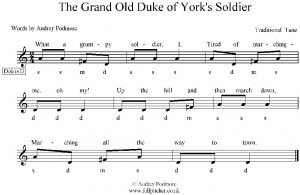They say “you don’t appreciate what you’ve got until you lose it” and the danger, real or perceived, of losing music education has galvanized many to proclaim, at every opportunity, the extra-musical benefits of the subject. I fear that this is a dangerous path to tread!
I can’t deny that active involvement in music can bring physical, intellectual, social and, yes, spiritual benefits. I think of the emotionally disturbed child who would not submit to normal classroom discipline until his desire to be part of the class music session led him to accept that intrinsic to making music; of the lifting of the spirits experienced by friends who joined a choir; of the increased alertness and engagement of profoundly disabled youngsters after music sessions, of improvements in coordination, strength and respiratory condition brought about by playing instruments; of the timid girl whose song-writing enabled her to step confidently out into the world.
So, why am I worried about using these examples as justification for music provision? Well, the tension between music as therapy and music as education has haunted my professional life. I became a music teacher because I wanted to enable access to music for everyone, as a valuable experience in its own right. I was thrilled when the National Curriculum was introduced into UK schools and, with it, every child’s entitlement to music education. In my innocence I thought it meant that schools now had a responsibility to explore ways of teaching those who couldn’t respond to the ‘one size fits all’ lessons of tradition. There was a growing acknowledgement that music was ‘good for special needs’ but, sadly, it wasn’t seen as an essential part of ‘good teaching’ within the system. The emphasis on the therapeutic benefits of music enabled the educational establishment, in many instances, to leave provision to music therapists and charities. Most young people with special needs were not in a position to challenge this but, for many years, I ran workshops for people with physical disabilities. Music was of huge importance in their lives, deprived as they were of many opportunities and experiences most of us take for granted. Some were very bitter about the poverty of the education they had received in schools and the emphasis on therapy. We were all agreed that therapy was hugely valuable and must be available for those who need it but it is not a substitute for music education.
I fear that the present emphasis on extra-musical benefits will weaken rather than strengthen the subject’s place within the curriculum. Some would like music to move out of schools into the wider community and there are, undoubtedly, great strengths in that model but we would lose ‘entitlement’ and a common experience and body of knowledge which are important to our culture, Great changes are afoot in education, generally, not just in music. We are just letting it happen without any reflection or discussion. I think we have to overcome our natural laziness and identify what is most valuable in music education and not, in our rush to adapt to the 21st century, ‘throw the baby out with the bath-water’! There are inherent values in music education and it must not be treated as a utility!

